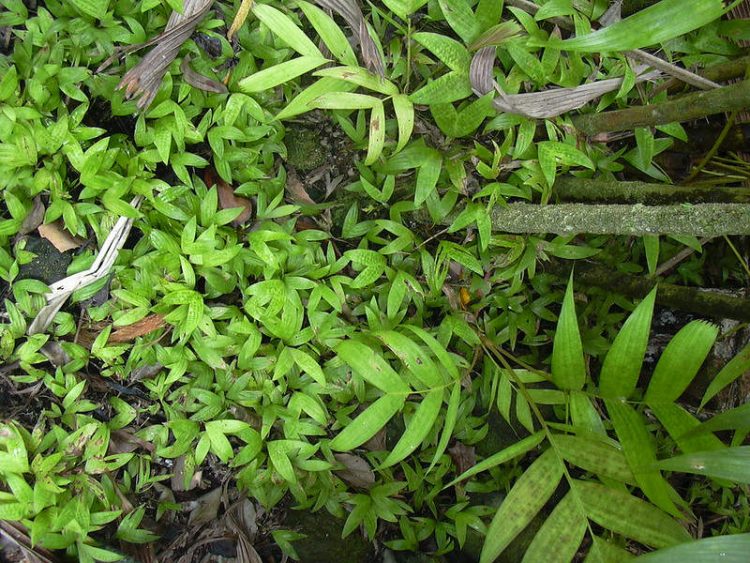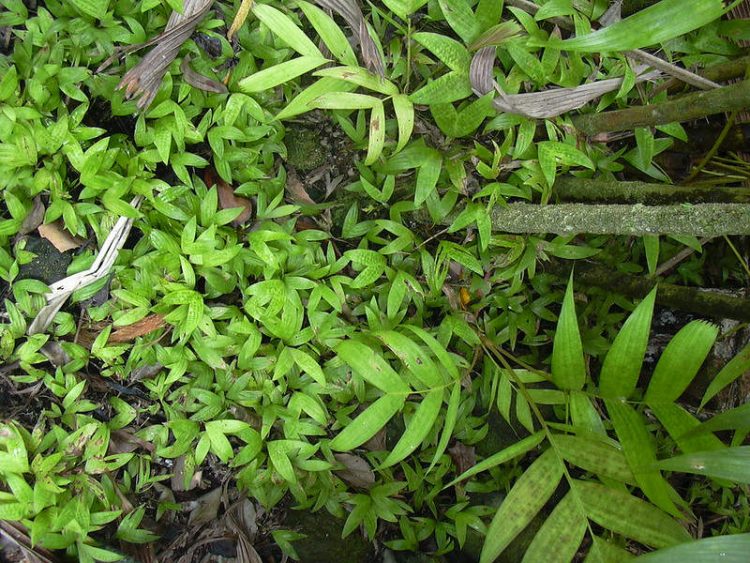Pinanga subterranea, a new species of palm discovered by researchers at the Royal Botanic Gardens, is one of only two known plants that exclusively fruit and flower underground.
There are more than 2,500 species of palm known to science, but Pinanga subterranea, a new species discovered on the tropical island of Borneo, is the only one that flowers and fruits only underground. The plant and its sweet fruits are well-known to the island’s indigenous population, but it has somehow been overlooked by scientists until now. Dr Paul Chai, a Malaysian botanist and namesake of the palm species Pinanga chaiana was the first to spot the underground-flowering palm, and in 2018, Kew scientists Benedikt Kuhnhäuser, Peter Petoe and William Baker took some samples for research purposes and discovered the plant’s amazing abilities.

Photo: Forest and Kim Starr/Flickr
According to Kew Gardens scientists, at first glance, the species looks like a juvenile plant of other common palms in the Bornean rainforest. However, these apparent babies are in fact fully formed adults, with their reproductive parts concealed below the soil surface.
The ability to flower and fruit underground – processes known as geoflory and geocarpy – are rarely encountered in nature, especially both of them in the same species. The peanut, for example, flowers above ground, but its fruit then develop underground, but exclusively fruiting and flowering entirely underground is extremely rare. In fact, this has only been observed in the orchid family Rhizanthella.
Known as underground orchids, Rhizanthella are leafless flowers that live in symbiosis with mycorrhizal fungi. They have no roots, no chlorophyll and new tubers form at the end of short stems. It’s a peculiar-looking flower that has little in common with most other orchid species. Pinanga subterranea, on the other hand, not only resembles other palms in the Pinanga genus, but also features a high number of underground seeds and fruit, suggesting a very successful polinating mechanism is at play. Scientists just don’t know what it could be…
“I have been studying palms for 30 years and am amazed at how they continue to surprise us,” Dr. William Baker, Senior Research Leader, said. This unexpected find poses many more questions than it answers. What is pollinating the palm? How does the pollinator find the flowers underground? How did this phenomenon evolve and what on Earth will palms surprise us with next?”
Palms in the Pinanga genus are usually pollinated by insects such as bees and beetles, which don’t usually operate underground. Researchers hope that the discovery of an underground flowering and fruiting palm will attract other researchers and hopefully help crack the mystery surrounding the pollination of Pinanga subterranea.













